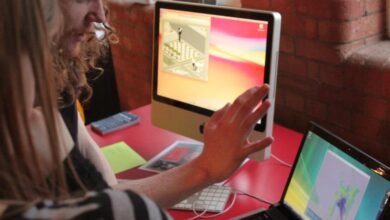Bio-authority and the newest surveillance by Phoebe Moore
Originally posted on phoebevmoore.wordpress.com on May 21st 2016
Once, surveillance was seen to be carried out only on suspected deviants or in wartime. Usually, someone knew who was watching and who was being watched or sought out. From witch hunts or suspicions of communist sensibilities to suspicion of infidelity, with the use of such vintage technologies as lie detectors, binoculars, Soviet lomo cameras and invisible ink, reasons for surveillance were specific, individualised and understood. Advances in technology allow power to be enacted over bodies in a far more abstracted way than before. Foucault introduced the concept of biopower as a symptom of the invasion of new forms of monitoring at increasingly intimate levels in History of Sexuality, asking incredulously, how can: ‘power exercise its highest prerogatives by putting people to death, when its main role was to ensure and multiply life, to put this life in order… the object of this biopoliticised power is the ‘species’ body, the body imbued with the mechanisms of life and servicing as the basis of the biological processes propagation, births and mortality, the level of health, life expectations and longevity’ (Foucault, 1976: 138-9). Then, in a lecture at the College de France on 11 January 1978, Foucault defines biopower as a ‘set of mechanisms through which the basic biological features of the human species became the ‘object a political strategy, of a general strategy of power’ (Foucault, 2004/2011: 1). In the series of lectures in Security, Territory, Population Foucault examines how what is to be protected is defined and how it is made known and acted upon. Security becomes centrifugal, a fictitious force that expands to include more and more activities and events including production and thought processes, psychology and human behaviours (Foucault, 2004/2009: 46). The newest forms of surveillance still seemingly ubitiquous, intangible and disciplining when considering algorithmic processes used to generate data. But it is not a far stretch to think that this data can and will be used to exercise overt authority. Foucault considered the law of optics as a soft method to correct human behaviour. Presently, many companies and managers lack the skill to fully generate or use data now possible, but the possibilities to go beyond a panoptical method of governance are palpable. Newest devices provide the instruments for Deleuze’s control society in ways not yet seen.
Inventions in newly introduced forms of sensory technologies may allow bio-authority in unprecedented ways and are adapted from older forms such as magnetic pendulums and micro-chronometers. Technologies now track and record human steps, sense motion and tone, location and a range of patterns via RFID, GPS and smaller and more powerful cameras. New sensors can recognise faces and detect body odour and fingerprint timeclocks are now regularly used for enrollment at work. Analytics have advanced and it becomes possible to cross reference with the use of ‘dashboards’. So a ‘new surveillance’ (Marx, 1988) can increasingly be carried out on anyone, anywhere and at any time, for no reason at all. The new innovation is that surveillance can be selected based on context or ‘geographical places and spaces, particular time periods, networks, systems and categories of person’ (Marx, 2002: 10) rather than on the basis of specific people whose identities are already known or suspected. Previously, we were able to differentiate between the observer and the observed fairly easily and technologies facilitated rather than directed processes. The newest surveillance is increasingly comprehensive and extensive and includes individual and cross-referenced data and information that goes far beyond the traditional records kept by churches or schools. Information about individuals can now be generated by algorithmic processes for automated identification and generation of analytics which, oddly, being named ‘people analytics’ actually removes a layer of human involvement. Digitalized surveillance introduces a ‘step change in power, intensity and scope’ (Graham and Wood, 2003). States’ rationale for such intensified or ‘close observation’, a term that does not capture the extent and ubiquity of practice (Marx, 2002: 12), range from the need to provide increased security against the threat of terrorism to the potential for research and development in a number of spheres from medical to urban design. Surveillance is being enacted more often, for more reasons, than ever before. In the USA the PATRIOT Act is being used to justify several activities that do not fall within its original remit of terrorist prevention. In the UK, surveillance techniques designed to prevent terrorism are being used against political protestors and to incriminate much lesser offenses such as violations of smoking bans and falsifying addresses (Schneier, 2015a: 105). Predictive policing techniques being developed in the USA and China gives the state ‘plenty of “precrime” and “thoughtcrime” data on its citizens to work with’ (Adl, 2016). Bizarrely, our perceived knowledge about ourselves could be less than the amount of knowledge that is held about ourselves and even stranger, that data may be impossible for us to access.
The data we produce simply by going online or using our ‘smart’ phones is seen as very useful as well as highly lucrative. One reporter set out to find out who was tracking his internet use and discovered that 150 companies did so within a 36-hour period (Shneier, 2015b). The ways companies do so is by installing tracking cookies onto browsers usually without you knowing. Cookies work by remembering preferences, recording what you’ve bought as well as tracking how many people view a website. Many companies have been set up to collect online data that is seen to be useful for advertising, such as the Rubicon Project. Rubicon’s Advertising Automation Cloud works by leveraging algorithms and analyzing data points and selling that information. Other similar companies are AdSonar, Quantcast, Undertone and Traffic Marketplace. A particularly invasive one is Dictionary.com which installs around 200 cookies when you visited its site (Schnier, 2015b). Other techniques involve planting cameras and recorders in mannequins in stores to identify customers’ habits (Heyes, 2014; Hornyak, 2012). This new world transforms the role of the customer in a process of reification, in which we are no longer customers, but we, or at least our daily activities, are products. Shneier likens the relationships we experience to those under feudalism whereby companies are akin to feudal lords and we are the peasants (ibid.).
Surveillance in shops and offices
While surveillance techniques in stores may surprise people and lead to such comments as ‘it’s a little creepy’, because people still largely externalise market relations psychologically, you can still find customers’ comments in response to cameras in mannequins to be as benign as: ‘if you’re an honest person and you’re not up to anything in the store, I think it’s fine’ (Heyes, 2014). When surveillance is carried out in workplaces, however, people begin to respond somewhat differently. Surveillance in the workplace has a similar set of tensions regarding ethics of practice, but has taken different forms at differing levels of intensity, from clear cut cases of performance management as designed by Frederick Taylor, Frank and Lillian Gilbreth and Henry Ford to contemporary people analytics. The mentioned industrialist thinkers put intricate movements of bodies at the centre of the measure for performance; observed people’s homes for ideal family constructs as linked to work productivity; celebrated newly invented efficiency devices in kitchens (for women’s use only, of course, at the time!); measured the extremes of people’s capabilities through complex processes using the most up to date technologies at the time.
The value and measure of work is the beating heart of debates in political economy but how much should employers be able to know about employees? The law has tended to focus on protections against discrimination that intense surveillance could lead to such as hiring practices around pregnancy or gender identity. Pervasive laws have existed historically such as the Japanese Surveillance Law for Thought Offences of 1936 that was used to fire people associated with the labour movement associated with the Communist party (McCabe and Prete, 1995: 212). Improved productivity and efficiency was the justification for scientific management and accompanying surveillance was similarly justified, but what will it mean when errors in thought such as those feared in the ‘red scare’ days become part of the regime of monitoring or intensified observation? Is socially unaccepted thought thought linked to being less productive or to being an actual threat in some way? Where should the line be drawn? Should your employer know about your online activities, health and wellbeing, or other aspects of what you might think were once part of your ‘private life’? On the other hand, would knowledge about workers’ health and wellbeing help employers identify better working practices and measure performance more accurately? Or could it be used to surreptitiously discriminate and used for appraisals? In some cases, predictive surveillance can be very useful such as in the case of construction sites where a workers’ heart attack could lead to a serious amount of destruction. In other industries though, people may want to know how people analytics are being carried out in human resource decision making or why employers are beginning to experiment with motion and temperature sensors such as the much-publicized incident at the Telegraph newspaper office where the ‘OccupEye’ was placed under employees’ desks. While the rationale for such devices was to control the use of lights to save electricity, the employer neglected to warn employees about the placement of these devices. It seemed an odd pursuit to try to track journalists’ movements but the implications caused significant kick back from employees. Apparently some staff simply removed batteries powering the units (Mance, 2016).
The new possibilities for bio-authority are significant for surveillance and datification. This new level of intimacy is the next step of what Gregg discusses in her seminal piece on Work’s Intimacy (2011). Some levels of resistance are already occuring we see in the case of journalists at the Telegraph as discussed above and in the case of one employeewho claimed she was fired for turning off the location tracking device on her work phone at the weekend. The role of worker, consumer, and manager change as technologies advance. It will be necessary to continue watching this proverbial, transforming space as the possibilities for bio-authority are real.




